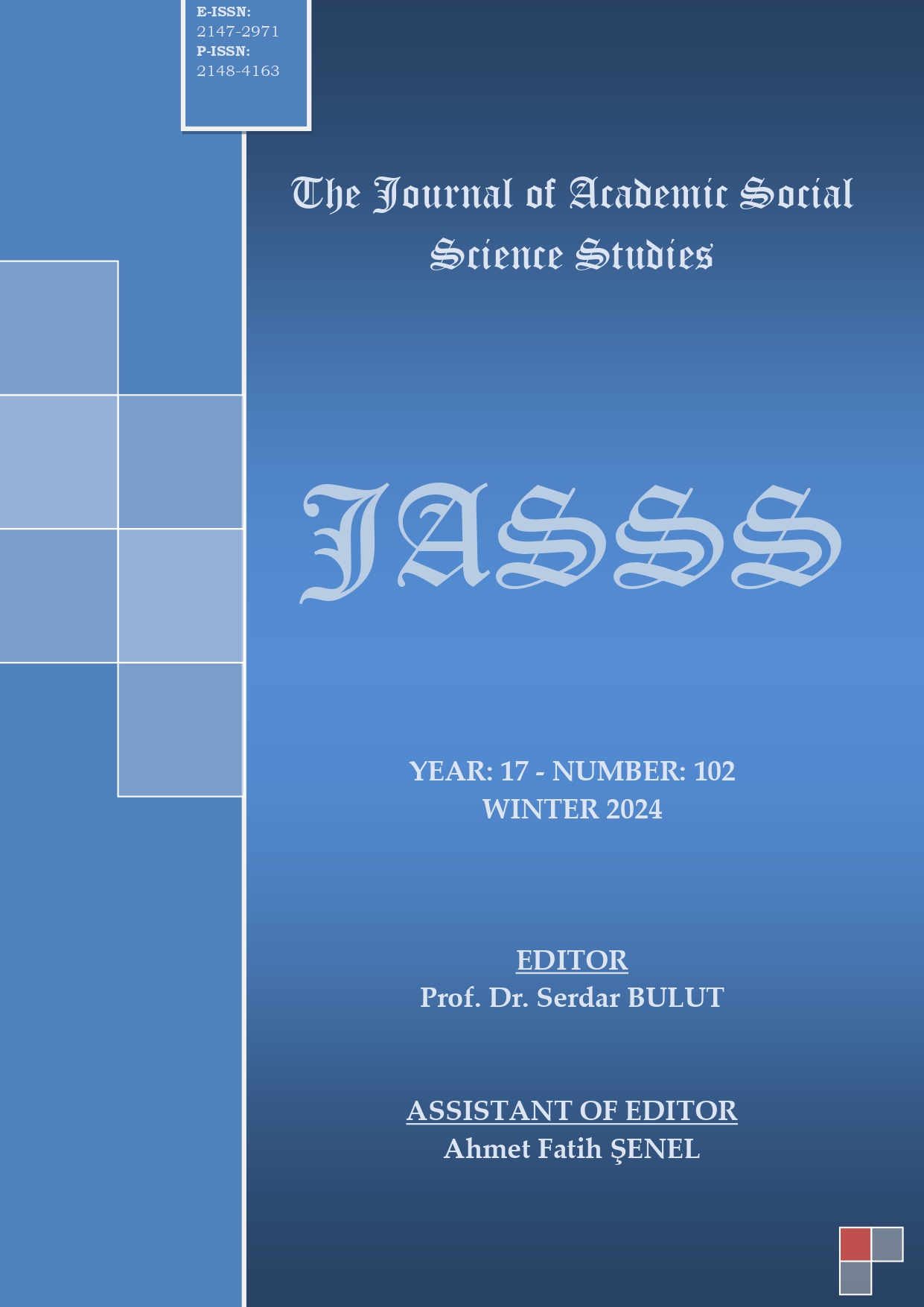Author :
Abstract
Bu çalışmanın amacı, nomofobinin uyku bozuklukları üzerindeki etkisini incelemektir. Bu bağlamda, nomofobi ve uyku bozuklukları hakkında bilgiler sağlanmakta ve bu sorunlara yönelik etkili çözümler geliştirmek için önemli bir adım atılmaktadır. Hatay'da gerçekleştirilen çalışmada nicel araştırma yöntemi tercih edilmiştir ve 521 katılımcı convenience sampling (ulaşılabilir örnekleme) yöntemiyle dahil edilmiştir. Veri toplama araçları olarak “Kişisel Bilgi Formu”, ‘Nomofobi Ölçeği’ ve ‘DSM-5 Uyku Bozukluğu Ölçeği’ kullanılmıştır. Toplanan veriler, SPSS yazılımı kullanılarak analiz edilmiştir. Analiz sırasında verilerin normal dağılıma uymadığı gözlemlenmiş ve bu nedenle bağımsız gruplar için t-testi, ANOVA, Pearson korelasyon ve regresyon analizleri uygulanmıştır. 521 katılımcının %71.2'si kadın, %28.8'i erkektir. Yaş dağılımı incelendiğinde, %69.1'in 18-24 yaş, %17.8'in 25-34 yaş ve %13.1'in 35 yaş ve üzeri olduğu görülmüştür. Eğitim durumu açısından, %6.3'ü ilkokul veya ortaokul mezunu, %20.2'si lise mezunu, %50.7'si ön lisans ve %22.8'i lisans veya daha yüksek bir dereceye sahiptir. Medeni durum açısından, katılımcıların %80'i evli, %20'si bekar olarak belirtilmiştir. Katılımcıların çoğunun günde yaklaşık 4-6 saat akıllı telefon kullandığı ve 7-9 saat uyuduğu tespit edilmiştir. Nomofobi seviyeleri ile uyku bozuklukları arasında pozitif ve anlamlı bir ilişki olduğunu göstermiştir. Ayrıca, nomofobinin uyku bozuklukları üzerinde anlamlı bir pozitif etkisi olduğu belirlenmiştir.
Keywords
Abstract
The objective of this study is to investigate the impact of nomophobia on sleep disorders. In this context, the study provides insights into both nomophobia and sleep disturbances, taking a crucial step toward developing effective solutions to these issues. A quantitative research methodology was employed in the study conducted in Hatay, using a convenience sampling approach to include 521 participants. Data collection tools consisted of a “Personal Information Form,” the ‘Nomophobia Scale,’ and the ‘DSM-5 Sleep Disorder Scale.’ The gathered data were analyzed using the SPSS software. During the analysis, it was observed that the data did not conform to a normal distribution, which led to the application of independent samples t-tests, ANOVA, Pearson correlation, and regression analyses. Among the 521 participants, 71.2% identified as female and 28.8% as male. The age distribution showed that 69.1% were between 18-24 years old, 17.8% were 25-34 years old, and 13.1% were 35 years and older. Regarding educational qualifications, 6.3% had completed primary or secondary education, 20.2% held a high school diploma, 50.7% had an associate degree, and 22.8% possessed a bachelor’s degree or higher. In terms of marital status, 80% of participants were married, while 20% were single. It was found that most participants used smartphones for approximately 4-6 hours per day and slept around 7-9 hours. It has shown that there is a positive and significant relationship between nomophobia levels and sleep disorders. In addition, nomophobia was found to have a significant positive effect on sleep disorders.





